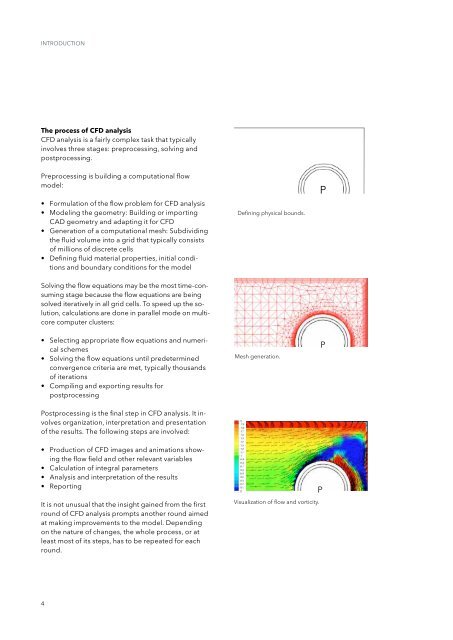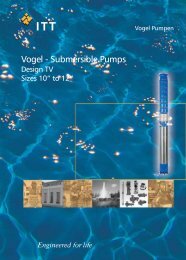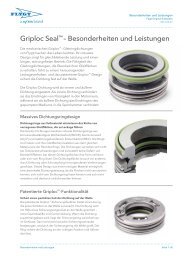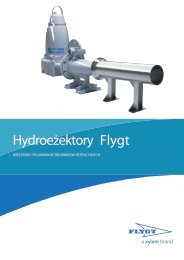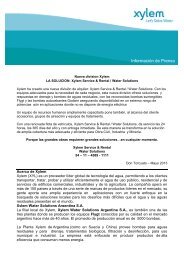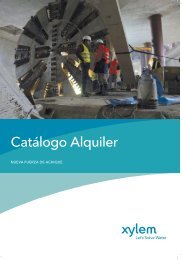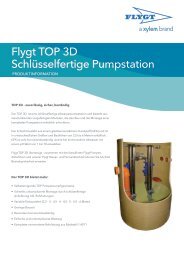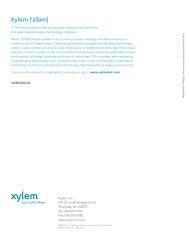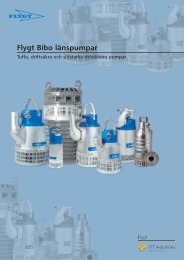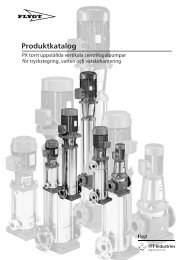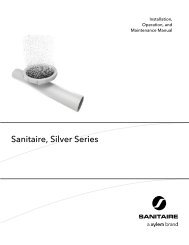Computational fluid dynamics - Flygt
Computational fluid dynamics - Flygt
Computational fluid dynamics - Flygt
You also want an ePaper? Increase the reach of your titles
YUMPU automatically turns print PDFs into web optimized ePapers that Google loves.
Introduction<br />
The process of CFD analysis<br />
CFD analysis is a fairly complex task that typically<br />
involves three stages: preprocessing, solving and<br />
postprocessing.<br />
Preprocessing is building a computational flow<br />
model:<br />
• Formulation of the flow problem for CFD analysis<br />
• Modeling the geometry: Building or importing<br />
CAD geometry and adapting it for CFD<br />
• Generation of a computational mesh: Subdividing<br />
the <strong>fluid</strong> volume into a grid that typically consists<br />
of millions of discrete cells<br />
• Defining <strong>fluid</strong> material properties, initial conditions<br />
and boundary conditions for the model<br />
Defining physical bounds.<br />
P<br />
Solving the flow equations may be the most time-consuming<br />
stage because the flow equations are being<br />
solved iteratively in all grid cells. To speed up the solution,<br />
calculations are done in parallel mode on multicore<br />
computer clusters:<br />
• Selecting appropriate flow equations and numerical<br />
schemes<br />
• Solving the flow equations until predetermined<br />
convergence criteria are met, typically thousands<br />
of iterations<br />
• Compiling and exporting results for<br />
postprocessing<br />
Mesh generation.<br />
P<br />
Postprocessing is the final step in CFD analysis. It involves<br />
organization, interpretation and presentation<br />
of the results. The following steps are involved:<br />
• Production of CFD images and animations showing<br />
the flow field and other relevant variables<br />
• Calculation of integral parameters<br />
• Analysis and interpretation of the results<br />
• Reporting<br />
It is not unusual that the insight gained from the first<br />
round of CFD analysis prompts another round aimed<br />
at making improvements to the model. Depending<br />
on the nature of changes, the whole process, or at<br />
least most of its steps, has to be repeated for each<br />
round.<br />
Visualization of flow and vorticity.<br />
P<br />
4


